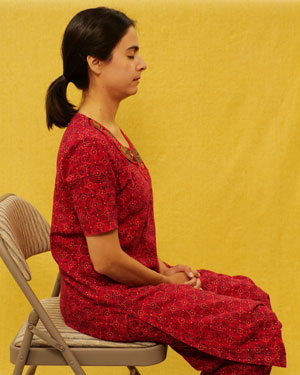Experience this meditation that is the higher yoga method of training, guided by His Holiness Swami Vidyadhishananda. This particular 12 step meditation is based on the first aspect of mindful breathing felt by awareness of external and internal space. To read more about the three aspects of mindful breathing as per Patanjali Yogasutra see the “Learn More” tab.
The 12 steps of this practice are outlined below with a time counter. Add the steps sequentially, as per your capacity and time availability. For example, practicing the first two steps for a month is a valid approach. Add subsequent steps only when you are ready, one at a time, and keep repeating until achieving distraction-free fluency. Once you graduate from the beginner level try the entire hour and let magic happen. The whole hour can be repeated daily to experience how mindfulness grips you and meditation happens.









